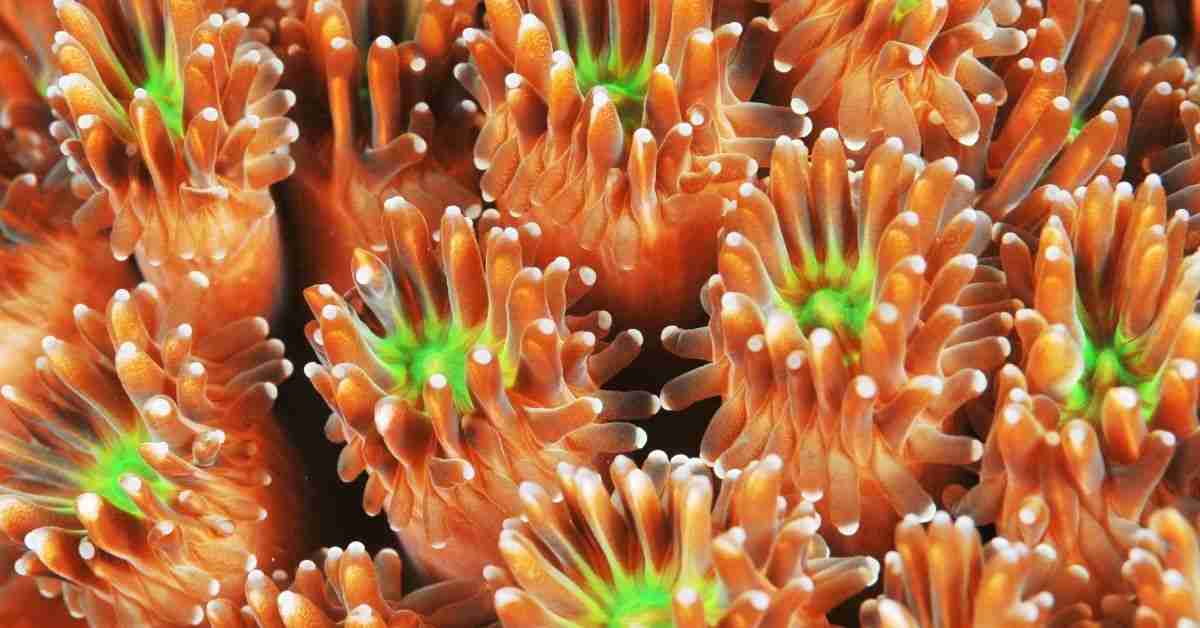Galaxea corals make for exotic additions to your tank. They are bright and colorful and can add a fresh look to your tank. However, caring for them can get confusing.
Are you unsure about Galaxea Coral care?
Well, don’t be. While these colorful and adaptable corals can get slightly aggressive, they’re manageable.
They simply need a medium tank, buffer spaces, sand, special elements, and meaty foods. Yes, it’s that simple.
If you have the time, read our article below. We have described all of these in detail for your ease.
What To Consider Before Getting Galaxea Corals?
These exotic corals have some special features. Let’s explore them one by one!
Avoid it If You’re A Newbie!
If you’re a newbie to this hobby, then it’s wise you don’t get a Galaxea Coral.
Their aggressive nature can be very hard to deal with as a newbie.
If you have time for corals, then the sweeper tentacles of the Galaxea coral can damage them. This has been known to close toadstool corals and other tame corals.
However, if you’re experienced, feel free to add one after weighing your alternatives.
Aggression Is An Issue
This tropical breed of coral tends to be aggressive. This is mainly due to their sweeper tentacles. These can grow up to 30 cm long, and they use a sweeping motion to attack.
They mainly attack their neighboring corals with burning stings. Sometimes they also attack small and clumsy fish that hover close.
These attacks mainly happen at night. During the day, they remain relatively calm and busy making food by photosynthesis.
Adaptable To Tank
While most corals are sensitive to light and flow, the Galaxea coral is more adaptable. They can thrive beautifully under a range of lighting and flow.
You can have the best t5 light in your tank or an intense metal halide lamp. Your Galaxea will grow beautifully. But make sure you give it time to acclimate to the light for 2 to 3 days.
You can also have moderate to high flow in your tank. But this won’t affect the coral or stress the polyps out so much.
You can’t say the same about other corals most of the time.
Everything To Consider for Galaxea Coral Care?
There are some parameters you need to consider to make sure it’s getting good care. Let’s look at them in detail.
Opt For A Tank Of 50 Gallons
With a Galaxea coral, you should avoid small tanks. A minimum tank size of 50 gallons is the ideal place to start.
The problem with smaller tanks is that the Galaxea won’t be able to grow right. This way, it will remain stressed and won’t open up to its fullest.
Additionally, the larger your tank, the safer you can keep your tank mates. Galaxea corals tend to be aggressive with their long, sweeper tentacles.
The large tank size will allow you to test and safely position your coral.
Meaty Foods Are A Must For Galaxea Diet
Galaxea corals love to devour meaty seafood. This can be in the form of Mysis shrimp or brine shrimp. It’s wise if you spot them using a turkey baster or a pipette.
You can also cut up chunks of salmon or scallops and spot-feed that. If you’re spot-feeding, do so 3 times a week. The rest of the week, it can rely on photosynthetic algae.
Medium To High Lighting With Targeted Placement Is Key
Galaxea coral is adaptable to various lighting options. However, you have to be a little cautious with placement. This is simply to avoid stressing the coral out.
For a tank with medium lighting, at about 50 to 100 PAR, aim for the middle.
This means you should place your Galaxea coral somewhere in the middle of the reef or rock.
For a tank with high marine lighting, pick a region that’s lower in the reef. You can also opt to use some trusty driftwood to create a base.
This way, you can make a lower base for your Galaxea and keep a buffer to protect your other creatures.
Keep the Calcium And Magnesium Of The Water Checked
Galaxea coral has specific requirements for calcium and magnesium. These 2 elements are fundamental for their growth.
For tanks bigger than 50 gallons, you will need calcium levels of 450ppm.
Now magnesium is the element that makes calcium absorption possible for Galaxea corals. That’s why magnesium levels need to be at 1200 ppm.
You can add both of these using mineral blocks. This can be either calcium or magnesium.
Remember to Keep Buffer Space
These refer to the gaps you need to keep between this and other corals. The sweeper tentacles of the Galaxea coral can reach up to 12 inches in length.
This is a major hazard because Galaxea corals tend to open and attack at night.
So you need to place it somewhere low, preferably at the bottom of your tank. Opt for a corner away from most of the tame corals and species and place it there.
However, don’t place the coral directly on the base or the substrate. Try attaching your coral to the rock first and then placing it over the substrate you use.
Keep a 12 to 13 inches gap between a coral and your Galaxea.
This way, you reduce risk and damage to the coral. You also keep the other organisms safe to the best of your abilities.
Sand Bed Is A Safe Option For Secured Placement
If you don’t want to deal with rocks and frags, you can always opt for a sand bed. Whatever substrate you use as a base, add a light layer of sand.
This can be anywhere from half an inch to two inches of sand.
Once you have that layer, gently place the Galaxea coral on top of the sand, preferably facing a corner.
That should be enough to secure and position your coral safely.
Finally, you can enjoy watching your Galaxea coral swaying in your aquarium.
FAQs
Question: What are sweeper tentacles?
Answer: These are the most common defensive features of many corals. These are essentially tentacles that move in a sweeping motion.
These tentacles have specialized cells called nematocysts that trigger a burning sensation when touched. This keeps fish and other prey at bay.
Question: Why is my coral not opening up?
Answer: Corals are very sensitive to changes in water parameters. If your corals are not opening, you need to test the water in your tank.
Mainly, you need to test for alkalinity, calcium, and magnesium levels, as they’re the most crucial for coral survival and growth.
Question: Is Galaxea Coral invasive?
Answer: This particular coral is not invasive at all. However, their sweeper tentacles tend to attack other corals and sometimes small fish.
Apart from this, the Galaxea coral does not cause any trouble.
Conclusion
And there you have it. Now you know all there is to know about Galaxea coral care.
Before getting one, simply consider some behavioral and environmental parameters. And you shall be good to go!

